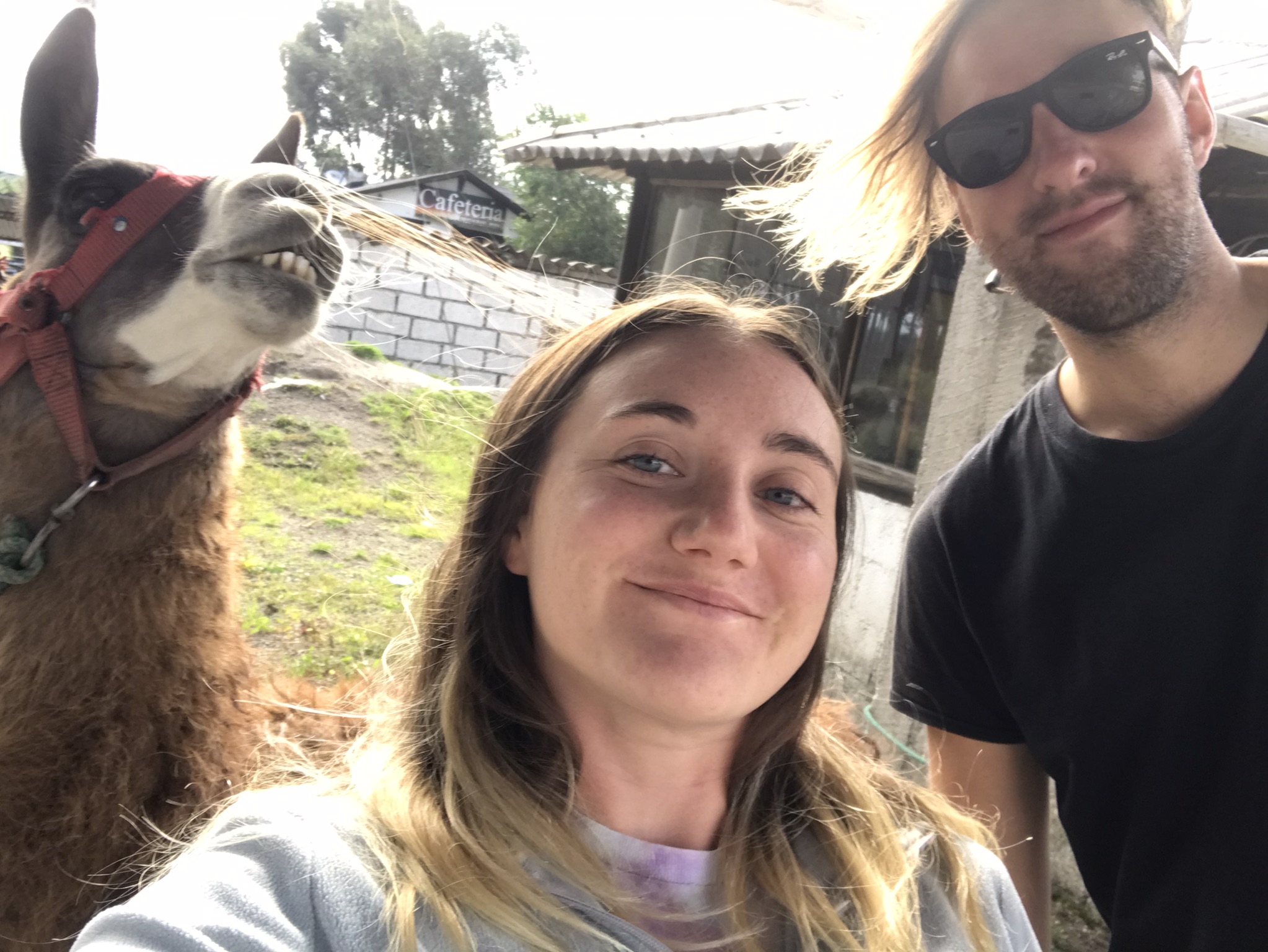Despite often being overlooked by tourists, Querétaro (full name Santiago de Querétaro) has a lot to offer. One of the most prominent cities in Mexico during the colonial period, it is here that the first rumblings of independence and rebellion against the Spanish crown were stirred. Querétaro later went on to have a key involvement in two subsequent revolutions, playing a significant role in shaping the history and future of the country.
Querétaro, the capital of the eponymous state, has many historical buildings, plazas and squares dating back to colonial times, while it is consistently ranked as amongst the most safe, stable and happy cities in Mexico. Despite being a large city, the historic centre is also very walkable. Check out this self-guided walking tour of some of the key sites in the city centre!
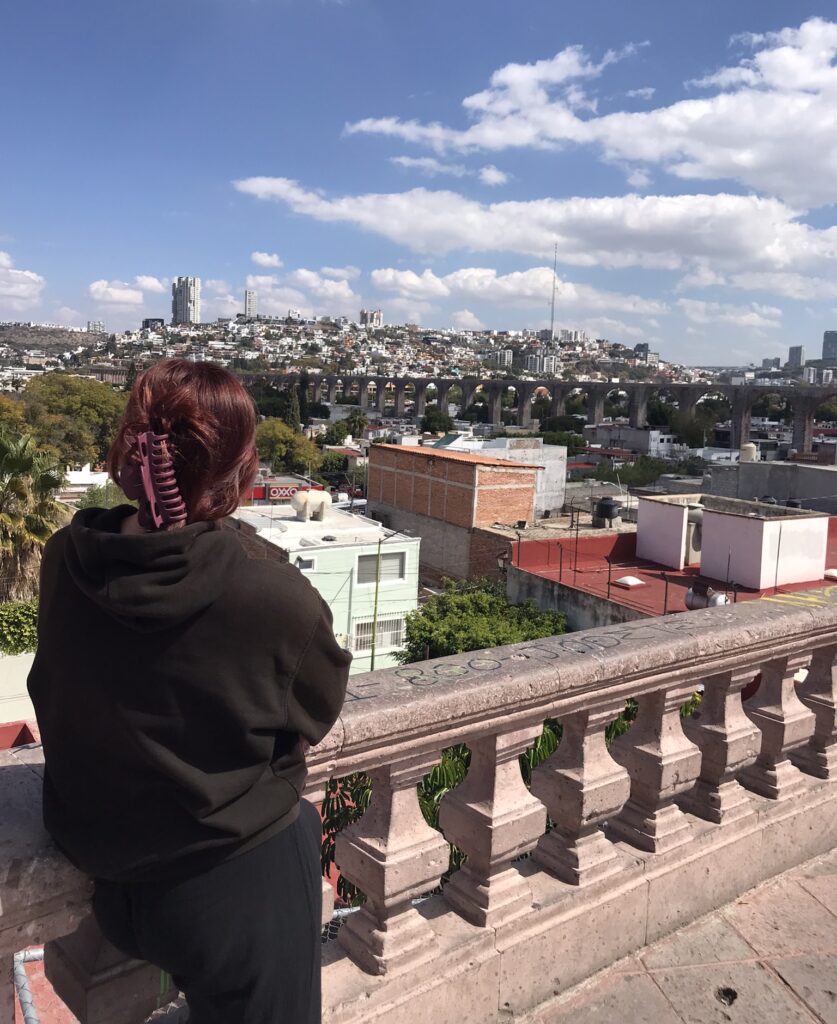
Start at the Mirador de los Arcos. The Querétaro aqueduct is probably the most iconic symbol of the city, and this is the best place to see it. Built in the 1700s, the aqueduct stretches over a kilometre across the city’s skyline. Some of the main highways in the city pass under the aqueduct’s arches, and you can get the best view of its impressive scale and grandeur from this viewpoint.
Next to the mirador is the Pantheon of Illustrious Persons of Querétaro. This small chapel is the resting place of Dona Josefa Ortiz de Dominguez, known locally as the ‘Corregidora’. The Corregidora was the wife of the local magistrate of Querétaro and played a key role in the start of the uprising against Spanish colonial rule in Mexico. She organised secret meetings of conspirators in her house, and later was said to have been able to alert Miguel Hidalgo of an impending crackdown on insurgents by the colonial government, prompting Hidalgo to issue his rallying cry and begin the Mexican War of Independence.
Along with Ortiz de Dominguez, the pantheon contains memorials and statues of many other famous and important citizens of Querétaro, including insurgents, artists, musicians and philanthropists. The small mausoleum and courtyard is free to enter and explore.
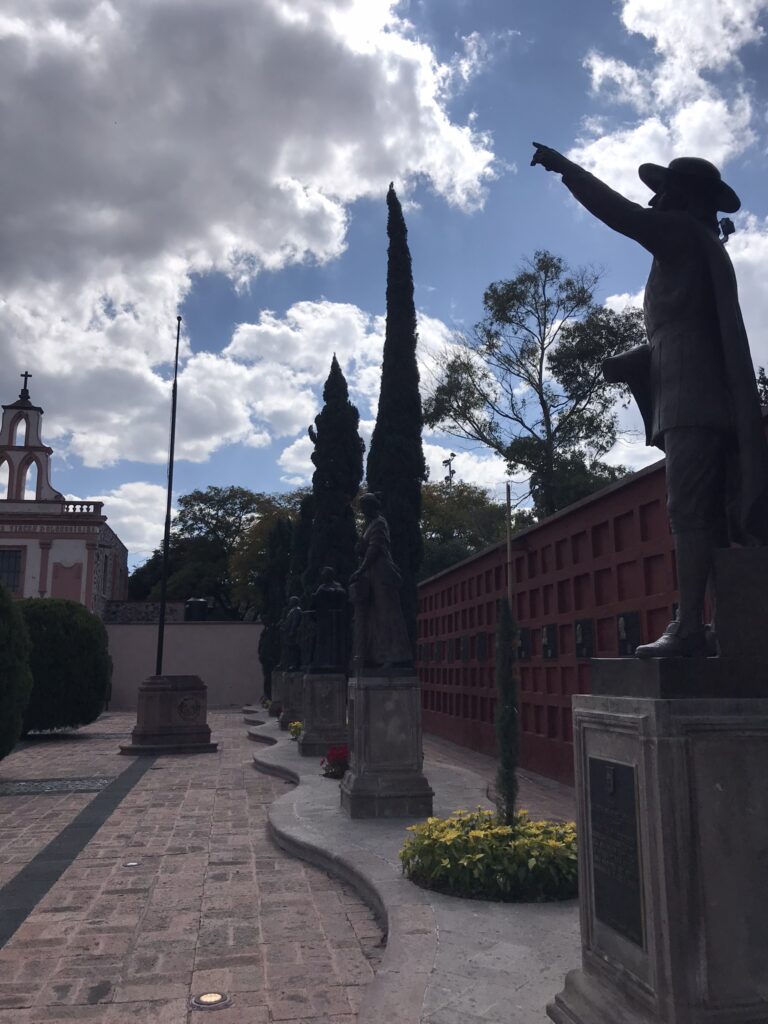
The Pantheon of Illustrious Persons contains monuments to scholars and heroes of Querétaro‘s past
West of the Pantheon along Ejercito Republicano is the Templo y Exconvento de la Santa Cruz. This convent building dates back to the 1500s and is most notable for a tree inside which grows cross-shaped thorns, which some claim is a miracle and proof of the existence of God. The building has an interesting history and at one point was used as a prison to house the ill-fated Mexican Emperor Maximilian I. Guided tours are offered, although they are in Spanish only and you might have to wait a while to take a tour.
Outside of the Santa Cruz convent is the Plaza de la Fundadores, a large open square which contains statues of some of the original founders of the city of Querétaro.
From the plaza, head west along Calle Independencia until you reach the Museo Casa de la Zacatecana. This small museum contains antiques and art in an old mansion building. The legend goes that the owner, a woman named Zacateana, murdered her husband in the house before meeting a mysterious and grizzly demise herself, and that subsequent tenants of the house were driven out by ghosts.
From the museum, turn right on Av. Luis Pasteur Sur to get to the Plaza de Armas. This green square is surrounded by some relatively pricey restaurants and is often used as a space for local cultural activities. The square was home to some pop-up art displays while we were visiting. Unlike in many Latin American cities, the Plaza de Armas is not the largest square in Querétaro although it does contain buildings of the state government, including the local government palace which is known as the Casa de la Corregidora.
In front of the Casa de la Corregidora, head left down Andador 5 de Mayo. This winding, colourful pedestrianised street is one of the most popular in the city, filled with shops, fountains and sculptures. Towards the end of the street you will come across the famous sculpture known as El Danzante Conchero Chichimeca, which depicts an ancient Chichimeca warrior performing a traditional dance.
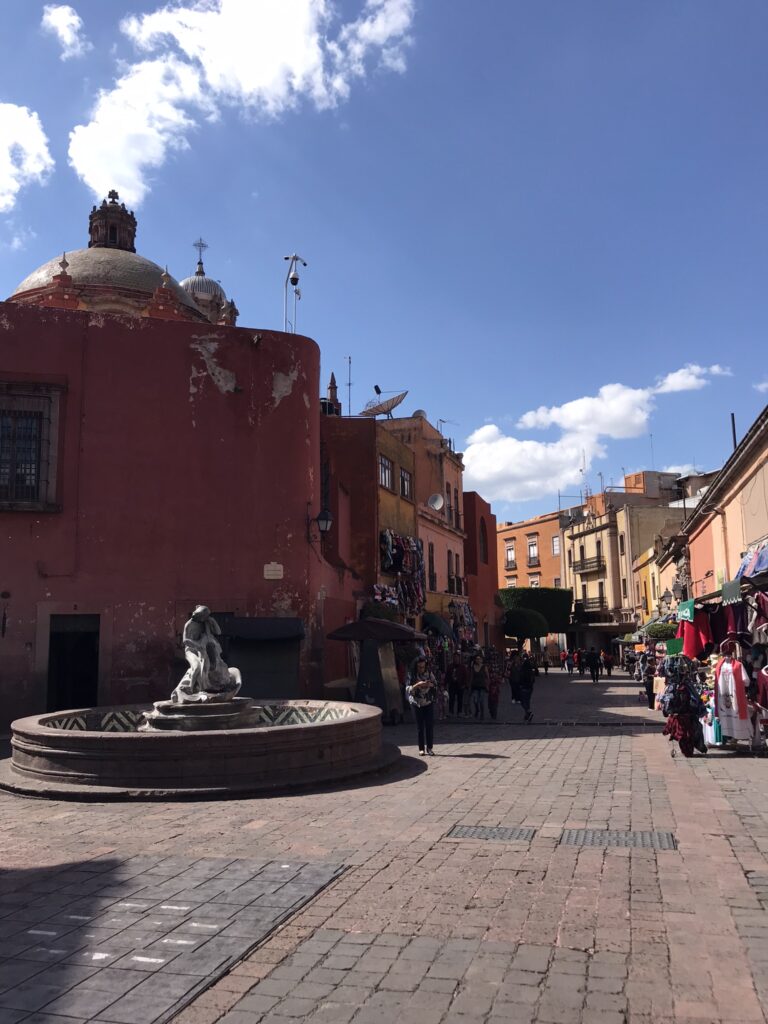
Andador 5 de Mayo is one of the most popular walking streets in downtown Querétaro
The end of Andador 5 de Mayo opens out into the Jardin Zenea, one of the city’s largest squares. Turn right however and you will find a smaller plaza with the impressive Monumento a la Corregidora, a statue commemorating Josefa Ortiz de Dominguez.
One block to the north and west of the monument to the Corregidora is the Teatro de la República, located on the corner of Calles Benito Juarez Norte and Hidalgo. This grand theatre dates back to the 1850s and over time has played a key role in Mexican history. It was here that the trial of the Mexican Emperor Maximilian I took place, the participants ultimately sentencing him to death and ushering in the era of the Republic. This was also the place where the modern Constitution of Mexico was signed following the Mexican Revolution in 1917. Unfortunately tours of the theatre were not possible when we visited, so we could only look at the building from the outside.
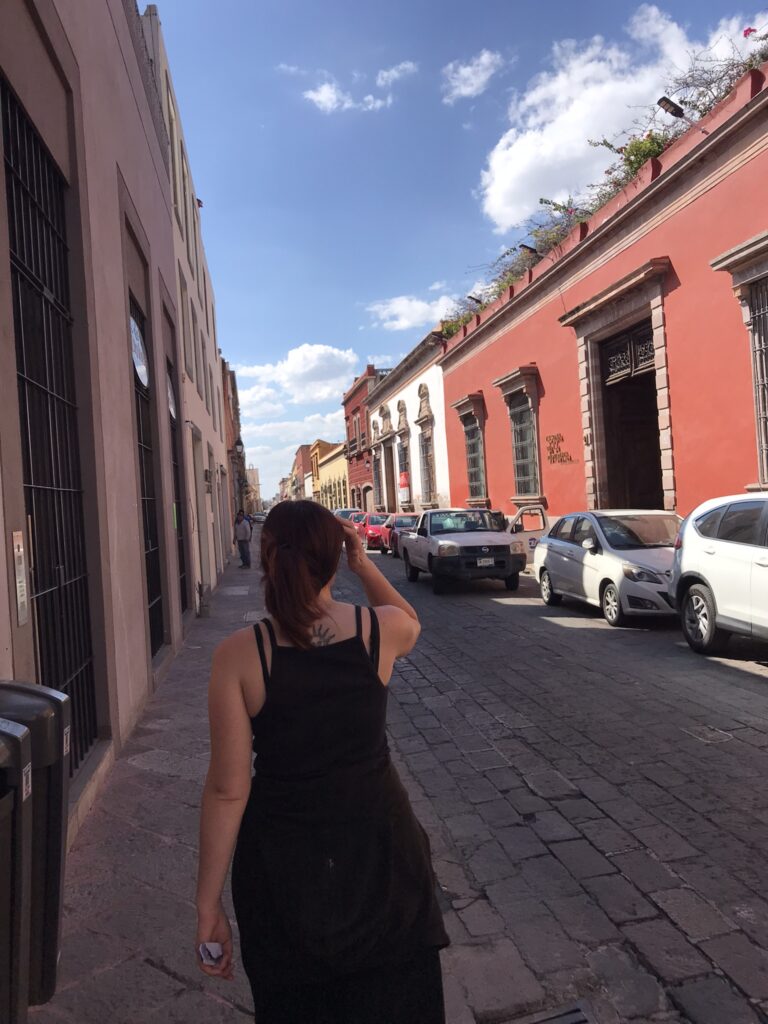
Head down Miguel Hidalgo Street to reach the Teatro de la República
From the theatre, head west for two blocks and then turn right down Calle Vicente Guerrero. You will reach the Museo de la Ciudad. Confusingly, this is not a museum of the city. Instead it is an art museum with free entry set in a historic mansion building.
Head further down Calle Vicente Guerrero to reach the Jardin Guerrero. This plaza, unsurprisingly, is dedicated to Mexico’s second president Vicente Guerrero with a large fountain and memorial. This is one of the more quiet and peaceful plazas in the centre of Querétaro, and is most notable for its immaculately-maintained box-shaped topiary trees. The plaza also contains the Parroquia del Sagrado Corazón de Jesús de Santa Clara, one of Querétaro’s many grand baroque-style churches.
Head down the pedestrian street next to the church and you will find a small courtyard containing the Fountain of Neptune. The fountain, which dates back to 1797, was originally used for practical purposes, to supply water to local residents. It initially contained a stone statue of Neptune, which was replaced by a bronze replica in the 1980s. The original stone sculpture is now displayed inside a local government building.
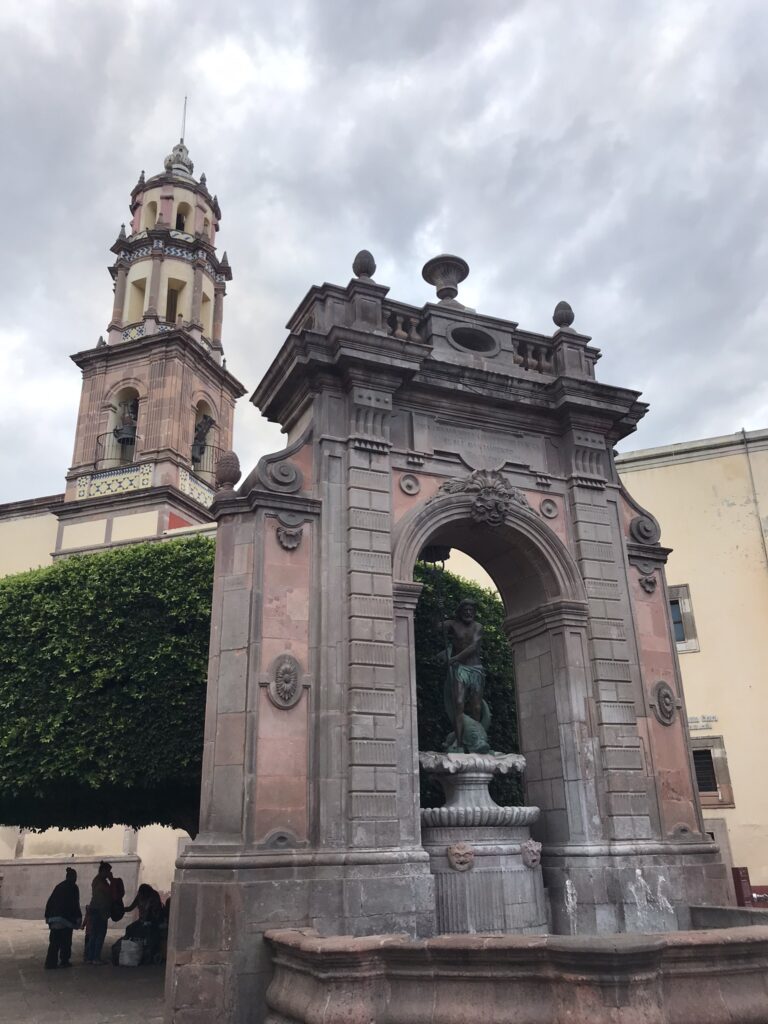
The Fountain of Neptune and Santa Clara church, one of the enduring symbols of Queretaro
From the fountain, continue along Calle Francisco Madero to Jardin Zenea. On the way, look out for the Casa de la Marquesa. This grand mansion was built in the 1750s for the wife of the local marquis. The building at one point housed the first Mexican Emperor, Agustin I, and was later the temporary headquarters of the Ministry of Foreign Affairs following the Mexican Revolution in the early 20th century.
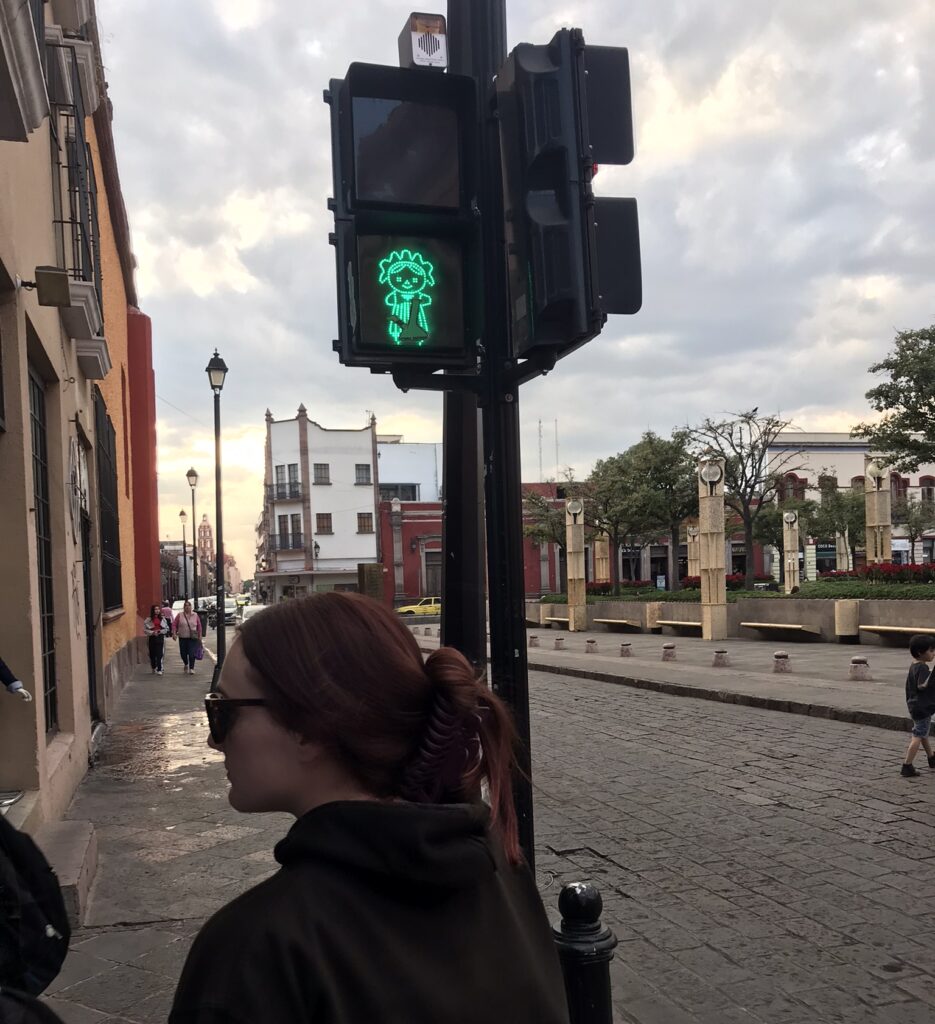
Also look out for the doll symbol on the pedestrian crossings – Querétaro claims to be the home of the Mexican ragdoll
Head on to Jardin Zenea. This is one of the largest squares in Querétaro and is a typical Mexican central square, a hub of activity with many vendors and locals milling about and plenty going on. The plaza was formerly part of the grounds of the huge Convent of San Francisco, a sprawling complex which now houses the Regional Museum of Querétaro.
Finish your tour at the Regional Museum inside the old convent. The museum contains artefacts and information relating to the history of the city and region from pre-Columbian through to modern times. The information displayed in the museum is in Spanish, but you can ask for a QR code with English translations at the ticket office.
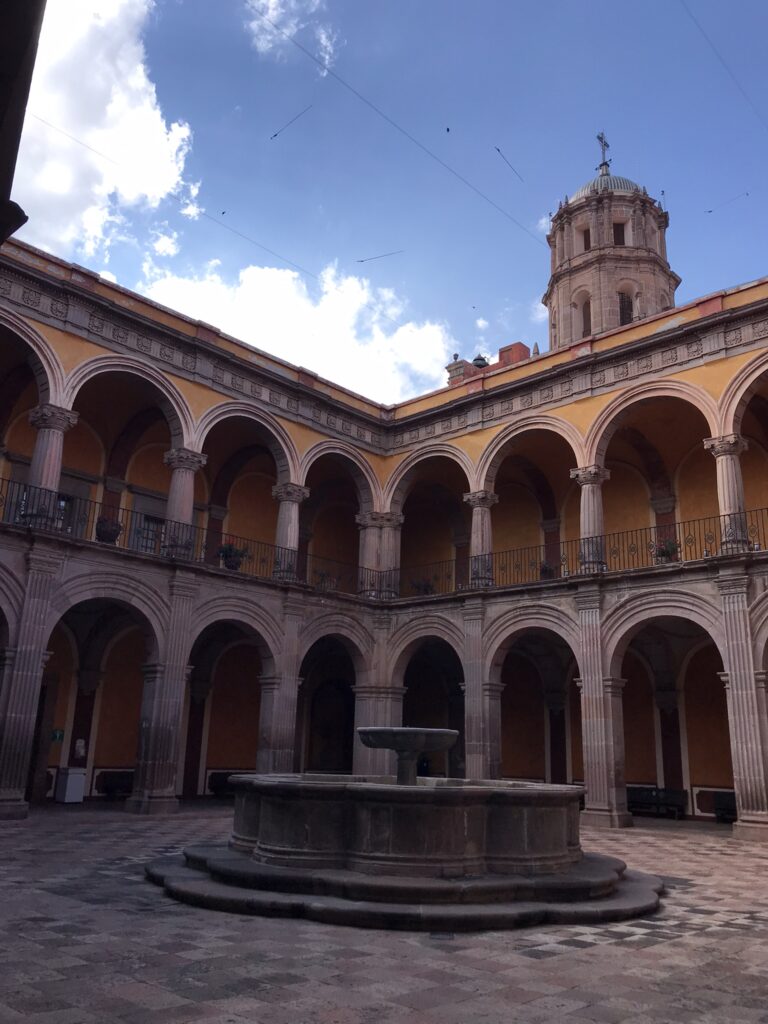
The Regional Museum is set inside the former Convent of San Francisco
Finish! For more Mexico content, click here!
This guide is now available on GPSmyCity!
